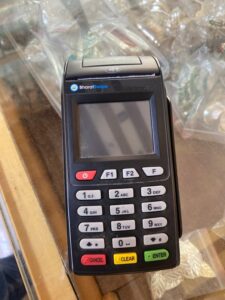How to Build Your Retirement Fund by Adding Gold to an IRA

A gold IRA is an individual retirement account that allows its owner to invest in physical gold or other precious metals. Normally, these types of investments are considered alternative assets and are handled by a self-directed individual retirement account (SDIRA) custodian.
Adding precious metals to a portfolio can offer several benefits, including diversification and protection against inflation. But before you make any decisions, it’s important to consider the pros and cons of a gold IRA.
Diversification
Gold is a great diversifier because it has the potential to increase in value while other asset classes decline. This helps to reduce the risk of losing money as you work toward your retirement goals.
Many people choose to invest in a precious metals IRA, also known as a gold IRA, to diversify their retirement portfolio. This account allows you to invest in physical gold bullion, as well as other precious metals. However, it’s important to understand the differences between a traditional IRA and a gold IRA before making an investment decision.
A traditional IRA is a tax-deferred retirement savings account that provides benefits such as tax-free growth and tax-free withdrawals. You can use a traditional IRA to save for retirement or other purposes, such as buying a home. A traditional IRA can hold a variety of investments, including stocks and bonds.
A self-directed IRA is an individual retirement account that allows you to make alternative investments, such as gold, in addition to stocks and bonds. The advantage of a self-directed IRA is that you have complete control over your investments. However, it’s important to work with a precious metals IRA firm that specializes in physical metals and follows strict IRS guidelines. In addition, look for a company that offers monthly conference calls and one-on-one discussions with investors to answer questions.
Tax-Free Growth
Gold IRAs allow you to invest in precious metals on a tax-free basis. This means that you can enjoy a greater return on your investment without worrying about taxes or early distribution penalties. This advantage also applies to any profits that you earn from your IRA when you sell the precious metals. However, there are some fees associated with a Gold IRA that you should be aware of. These include account setup and maintenance, storage and insurance.
Many investors choose to add a Gold IRA because it offers a unique opportunity for diversification and protection against economic risks. Unlike traditional investments, such as stocks and mutual funds, gold is not highly correlated with other assets. In addition, it is a store of value that has been recognized for thousands of years.
To open a Gold IRA, you must first find a trusted gold IRA custodian who can help you set up your account and manage your precious metals. This custodian will ensure that you select the right type of precious metal and store it safely in an IRS-approved depository. They will also handle all the administrative and documentation work. Depending on the company you choose, you can fund your account with cash or transfer your existing retirement savings to it. You can also roll over any other IRA accounts that you hold, such as a 401(k) or 403(b).
Tax-Free Withdrawals
The tax-free nature of Gold IRA investments can make them an attractive addition to retirement portfolios. Withdrawals from a Gold IRA can be made without paying federal or state taxes, as long as the asset is sold at a price higher than its purchase price and not in exchange for another investment, like stocks or bonds.
The rules for Gold IRA withdrawals are similar to those of other IRA accounts. You can invest in a traditional or Roth Gold IRA, and contributions are made with pretax dollars. You won’t pay taxes on withdrawals until you reach retirement age and begin to take distributions.
Some people choose to add precious metals to their retirement portfolios because of the benefits that these assets offer, including a history of stability during economic downturns and insulation from currency devaluations. They also tend to have lower volatility than paper assets.
However, you should be aware of the higher costs associated with Gold IRA investments, such as storage and custodial fees. It’s also important to look for a company that offers transparent pricing policies and competitive prices for the gold you buy. Lastly, consider whether the precious metals you buy are easily convertible into cash in the event of a crisis or emergency. This will ensure that you can withdraw your money quickly and easily when needed.
Security
Gold’s history as a store of value makes it an attractive addition to a retirement portfolio. It’s also seen as a safe haven asset during economic uncertainty or stock market declines, and it may provide stability to a portfolio in these situations.
However, there are some things to consider before investing in a precious metals-based retirement account. These accounts are more expensive to maintain than traditional IRAs, and they don’t offer the tax-advantaged growth that many other retirement investments do. They’re also less liquid, meaning you could have trouble selling them quickly when needed.
If you’re considering a gold-backed retirement account, choose the right provider. Look for a company that offers competitive pricing on physical gold and other precious metals and provides unbiased customer education. You should also look for a company that doesn’t charge any ancillary fees and has a good reputation in the industry.
You can open a precious metals-based retirement account by rolling over funds from your 401(k), 403(b), 457, or pension plan. If performed correctly, this transfer won’t trigger any taxes or penalties. You can also invest in gold through exchange-traded funds (ETFs) or mutual funds that track precious metal prices and indexes. However, physical gold and other precious metals have their own unique benefits and can help diversify a retirement portfolio.







